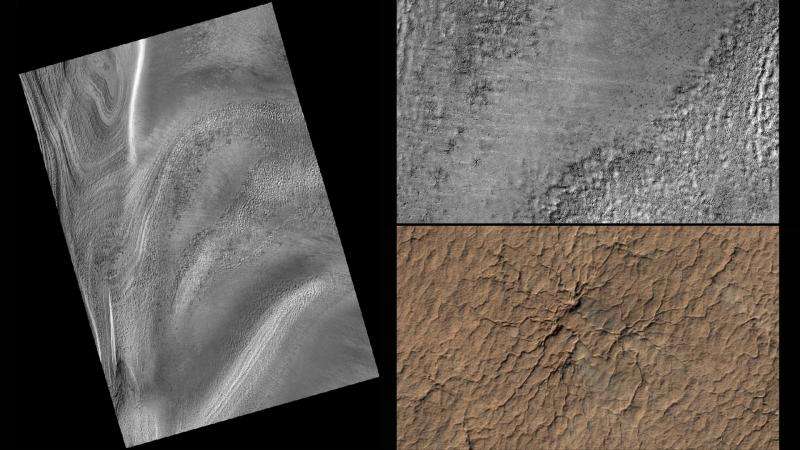New website gathering public input on NASA Mars images

Science-team members for NASA's Mars Reconnaissance Orbiter are soliciting help from the public to analyze exotic features near the south pole of Mars.
By categorizing features visible in images from the orbiter's Context Camera (CTX), volunteers are using their own computers to help the team identify specific areas for even more detailed examination with the orbiter's High Resolution Imaging Science Experiment (HiRISE) camera. HiRISE can reveal more detail than any other camera ever put into orbit around Mars.
Planet Four: Terrains is on a new platform released by the Zooniverse, an organization that currently hosts 30 projects that enlist people worldwide to contribute to discoveries in fields ranging from astronomy to zoology. The new platform is designed to make it easier than ever for a researcher needing help with data analysis to set up a task to involve volunteers.
Some of Mars resembles deserts on Earth, but Martian polar regions display some quite unearthly processes and features. These are related to seasonal freezing and thawing of carbon dioxide ice, which does not exist naturally on Earth, but is manufactured and well-known as "dry ice." Every winter the polar regions of Mars are covered with a seasonal polar cap of carbon-dioxide ice.
"In the spring the dry ice turns to gas and carves unusual features in the Mars surface, resulting in exotic terrains described informally as 'spiders,' 'Swiss cheese' and 'channel networks,'" said HiRISE Deputy Principal Investigator Candice Hansen, of the Planetary Science Institute, Tucson, Arizona.
On the Planet Four: Terrains website, volunteers review images from the south polar region of Mars and identify particular types of terrains. Each image from CTX covers a swath of ground about 16 miles (30 kilometers) wide, at a resolution of about 20 feet (6 meters) per pixel. The results from the citizen scientist input through Planet Four: Terrains will be used to target HiRISE for detailed seasonal studies beginning in mid-2016. Each HiRISE image covers a swath about 3.2 miles (five kilometers) wide, at a spatial scale of about 20 inches (half a meter) per pixel.
This new website is an outgrowth of the Planet Four initiative through which more than 120,000 citizen scientists have analyzed HiRISE image cutouts to measure fans that appear in the spring on the seasonal ice cap.
More information:
Zooniverse is available at www.zooniverse.org.
Information about how to participate is at the "Planet Four: Terrains" website, at: terrains.planetfour.org
Provided by NASA




















